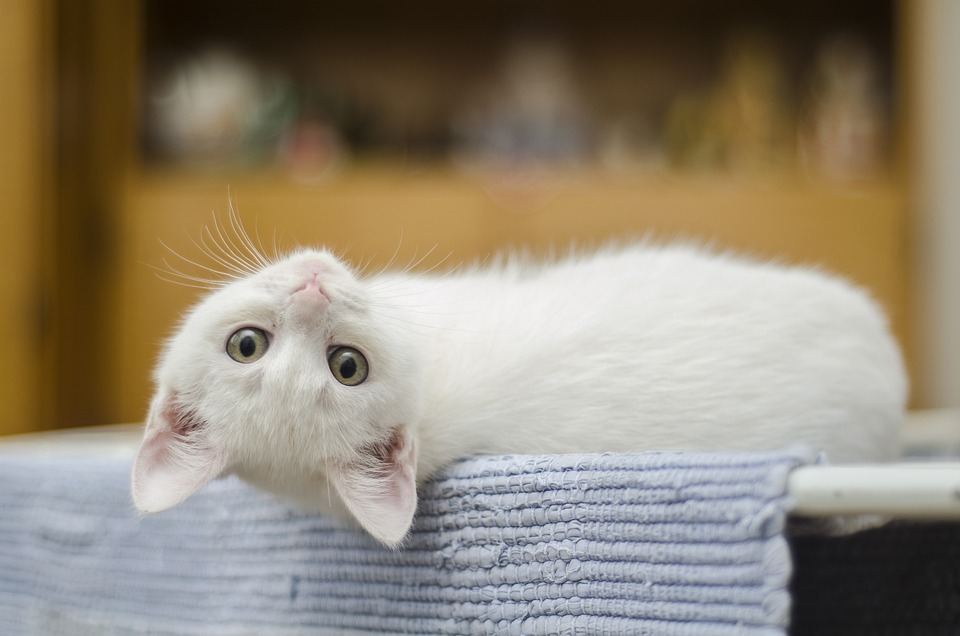Tail fluffing is a behavior commonly observed in various animal species, particularly in cats. Though it may seem like a simple act, tail fluffing serves a significant purpose in the animal kingdom. This article aims to explore the reasons behind tail fluffing in animals, with a specific focus on cats. Additionally, it will address frequently asked questions regarding this intriguing behavior.
Tail fluffing refers to the act of raising and expanding the fur on an animal’s tail, making it appear larger and more voluminous. This behavior is commonly observed in cats, but it can also be seen in other animals such as squirrels, birds, and even some species of dogs. The physical manifestation of tail fluffing varies among species, but it generally involves raising the tail and puffing out the fur.
The purpose of tail fluffing can be attributed to communication, protection, and temperature regulation. Firstly, tail fluffing serves as a form of communication and expression for animals. It can convey fear or threat, alerting other animals to potential danger. A fluffed tail can also signal aggression or dominance, indicating that an animal is ready to defend itself or establish its dominance within a social hierarchy.
Moreover, tail fluffing acts as a protection and defense mechanism. By raising and fluffing their tails, animals create the illusion of a larger size, deterring potential predators. This tactic is particularly effective for animals with smaller body sizes, as it can make them appear more intimidating and less vulnerable.
In addition to communication and protection, tail fluffing also plays a role in temperature regulation. In cold weather, the fluffed fur provides insulation, helping to keep the animal warm. Conversely, in warm climates, tail fluffing can help enhance heat dissipation by creating airflow between the fur and the animal’s body.
When it comes to cats, tail fluffing is a natural instinct deeply rooted in their evolutionary background. Cats use their tails as a means of communication, sending signals to other cats, animals, and even humans. Tail fluffing in cats can indicate fear or anxiety, often seen when they encounter unfamiliar or threatening situations. It can also signify aggression or territoriality, serving as a warning to potential intruders.
Understanding a cat’s body language in conjunction with tail fluffing is key to interpreting their emotions and intentions. The position and posture of the tail, as well as other accompanying behaviors such as hissing or growling, can provide valuable insights into a cat’s state of mind.
To address common queries regarding tail fluffing in cats, here are a few frequently asked questions:
Q1. Why does my cat’s tail fluff up when it sees another cat?
A cat’s tail fluffing when it sees another cat is a defensive response. It is a way for the cat to appear larger and more intimidating, signaling to the other cat that it is ready to defend itself if necessary.
Q2. Can tail fluffing be a sign of happiness or contentment in cats?
Tail fluffing is typically not associated with happiness or contentment in cats. It is more commonly seen as a response to fear, anxiety, or aggression.
Q3. How can I differentiate between fear-based tail fluffing and aggressive tail fluffing in cats?
Fear-based tail fluffing is often accompanied by other signs of fear, such as crouching, dilated pupils, and flattened ears. Aggressive tail fluffing, on the other hand, may be accompanied by hissing, growling, and a stiff body posture.
Q4. Are there any health conditions that can cause tail fluffing in cats?
While tail fluffing is typically a normal behavior in cats, certain health conditions, such as skin allergies or parasites, can cause excessive tail fluffing. If you notice persistent or abnormal tail fluffing in your cat, it is advisable to consult a veterinarian.
Q5. Should I be concerned if my cat’s tail remains constantly fluffed?
If your cat’s tail remains constantly fluffed without any apparent trigger or return to a relaxed state, it may be a sign of chronic stress or anxiety. In such cases, it is recommended to consult a veterinarian or a professional animal behaviorist for further evaluation and guidance.
In conclusion, understanding the purpose of tail fluffing in animals, particularly in cats, provides valuable insights into their behavior and communication. From signaling fear or aggression to providing protection and regulating body temperature, tail fluffing serves various functions across different species. By paying attention to this behavior and its accompanying body language, cat owners can better understand their feline companions and create a harmonious living environment.








